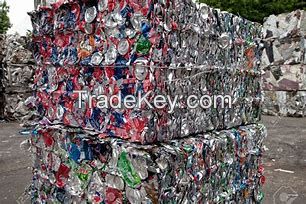详情
per waste, corrugated cardboard containers: Grade *1 (OCC), Double
sorted corrugated: Grade *2 (DS OCC), Magazines: Grade *0 (OMG),
news on-question: 9th year (OI or OIN) and OCC *5/5.
We also provide a special product upon customer\'s request. We have
long-established relationships with the global occ (old corrugated
board) and fiber buyers in a wide range of industrial
operations.
Different Types of Paper Waste:
OCC *1 - Grade *1 OCC
·Old corrugated containers *1 - Industries defines corrugated
containers (Grade *1 OCC)
·These are corrugated papers with test liners, jute or kraft. Under
this category of paper, the following characteristics are
exposed.
·Prohibitive materials: do not exceed 5%
·Outside throws: must not exceed 5%
·Combined and prohibitive throws cannot exceed 5%.
OCC *2 - Grade *2 (OCC Sorted Double)
·Sorted to be free of cardboard, off-shore corrugated cardboard,
plastic and wax.
·Wastebasket/prohibitive materials: 0%
·More prohibitive throws: do not exceed 5%
·Moisture content: not to exceed 5%
·Ball sizes in (cm) is **5 (width)/height (**5) and length
(**0).
·*5 bales per container.
Difference Between OCC Grade *1 and *2
There are some distinct differences between the OCC *1 waste paper
specification and the OCC *2 waste paper specification.
OCC *1, also known as Grade *1 OCC, mainly consists of corrugated
cardboard containers used for paper recycling. They usually have
kraft, jute or test linings and are sold in the same way.
The OCC *2 Paper Waste specification is also often referred to as
the DS OCC category or Sorted Corrugated Double Category. This
specific classification consists of different types of double
corrugated containers that are generated from supermarkets as well
as commercial and industrial facilities.
These corrugated double containers also have jute, test coating
and/or kraft coatings. The materials are specially sorted to ensure
they are free of cardboard and off-shore corrugated materials, wax
and plastic. In the case of OCC grade *2 materials, the total
throws do not exceed 2%.
Prohibitive materials for this category do not exceed half of
1%.
ONP / OINP Press Journals
·Old new paper waste, paper waste, on a news paper.
·Mills use newspapers, inferior paper, to make more newsprint,
fabrics and other products.
·Prohibitive materials cannot exceed 2%
·Throws and prohibitive cannot exceed 4%
·Other acceptable papers cannot exceed *0%
Residential mixed paper, soft mixed paper and mixed hard paper
·Residential mixed paper: consists of a mixture of various grades
of paper not limited in the type of fiber content, normally
generated from residential multi-material collection programs.
Prohibitive materials cannot exceed 2%. More prohibitive throws
cannot exceed 5%.
·Blended soft paper: consists of a clean, sorted mixture of various
grades of paper not limited to the type of fiber content.
Prohibitive materials cannot exceed 1%. More prohibitive throws
cannot exceed 5%.
·Mixed hard paper: consists of a clean and sorted mixture of
various grades of paper containing less than *0% earthwood content.
Prohibitive materials cannot exceed 1/2 of the 1%. More prohibitive
outlancers cannot exceed 3%
We could offer monthly bulk quantities of paper of both baled and
non-scrap metal as below:
